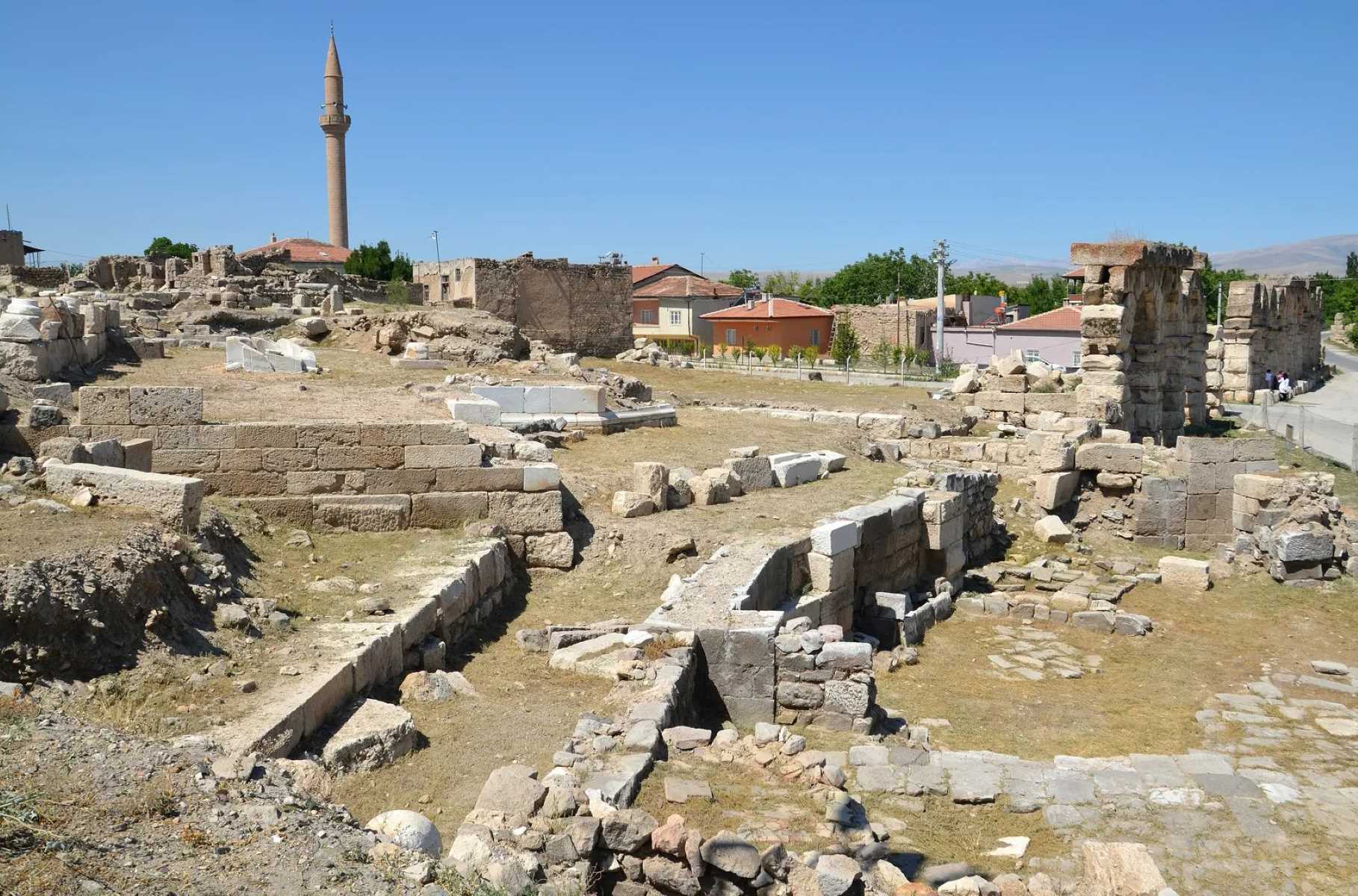
Sebastopolis, Cilicia—a name that might not ring a bell for many, yet it holds a treasure trove of history and intrigue. Nestled in ancient Anatolia, this city was once a bustling hub of culture, trade, and politics. But what makes Sebastopolis so fascinating? Why should you care about this ancient city? Because it offers a unique glimpse into the past, revealing stories of empires, battles, and everyday life that shaped the world we know today. From its strategic location to its architectural marvels, Sebastopolis is a testament to human ingenuity and resilience. Ready to uncover the secrets of this ancient city? Let’s dive into 38 captivating facts about Sebastopolis, Cilicia!
Ancient Origins
Sebastopolis, Cilicia, a city with a rich history, has many fascinating aspects. Let's dive into some intriguing facts about this ancient place.
-
Sebastopolis was founded during the Hellenistic period, around the 3rd century BCE. The city was established by the Seleucid Empire.
-
The name "Sebastopolis" means "City of the Venerable" in Greek. It reflects the city's importance and reverence in ancient times.
-
Located in the region of Cilicia, Sebastopolis was strategically positioned along major trade routes. This made it a bustling hub for commerce and culture.
-
The city was known for its impressive architecture, including grand temples and public buildings. These structures showcased the wealth and artistic skills of its inhabitants.
Roman Influence
The Roman Empire left a significant mark on Sebastopolis, shaping its development and culture.
-
Sebastopolis became part of the Roman Empire in the 1st century BCE. This transition brought new administrative and military structures to the city.
-
Under Roman rule, Sebastopolis flourished as a center of trade and governance. The city's economy thrived due to its strategic location and Roman infrastructure.
-
The Romans constructed an extensive network of roads connecting Sebastopolis to other major cities. This facilitated trade and communication across the empire.
-
Roman baths, theaters, and forums were built in Sebastopolis, reflecting the Roman way of life. These public spaces became social and cultural hubs for the city's residents.
Religious Significance
Sebastopolis held religious importance for various cultures and faiths throughout its history.
-
The city was home to several temples dedicated to Greek and Roman gods. These temples attracted pilgrims and worshippers from far and wide.
-
Christianity spread to Sebastopolis during the early centuries of the Common Era. The city became an important center for Christian worship and community.
-
Sebastopolis hosted several early Christian councils and synods. These gatherings played a crucial role in shaping the doctrines and practices of the early Church.
-
The city had a bishopric, and its bishops were influential figures in the early Christian world. They participated in significant theological debates and councils.
Cultural Heritage
Sebastopolis was a melting pot of cultures, contributing to its rich and diverse heritage.
-
The city was known for its vibrant arts scene, including theater, music, and visual arts. Artists and performers from different cultures showcased their talents in Sebastopolis.
-
Sebastopolis had a diverse population, including Greeks, Romans, and indigenous Cilicians. This cultural diversity enriched the city's social fabric and traditions.
-
The city celebrated various festivals and public events, reflecting its multicultural heritage. These celebrations included religious ceremonies, athletic competitions, and theatrical performances.
-
Sebastopolis was famous for its local cuisine, which blended Greek, Roman, and Cilician flavors. The city's markets offered a wide variety of foods and spices.
Archaeological Discoveries
Modern excavations have uncovered many fascinating artifacts and structures in Sebastopolis.
-
Archaeologists have discovered remnants of ancient buildings, including temples, theaters, and baths. These findings provide insights into the city's architectural and cultural history.
-
Numerous inscriptions and coins have been found in Sebastopolis. These artifacts offer valuable information about the city's political and economic life.
-
Excavations have revealed intricate mosaics and frescoes in Sebastopolis. These artworks depict scenes from mythology, daily life, and religious rituals.
-
The city's ancient necropolis has yielded many tombs and burial artifacts. These discoveries shed light on the funerary practices and beliefs of Sebastopolis' inhabitants.
Decline and Legacy
Sebastopolis experienced periods of decline, but its legacy endures through history and archaeology.
-
The city faced several invasions and conflicts during the late antiquity period. These events contributed to its gradual decline.
-
Natural disasters, such as earthquakes, also impacted Sebastopolis. These calamities damaged the city's infrastructure and contributed to its eventual abandonment.
-
Despite its decline, Sebastopolis remained a site of historical and cultural significance. Its ruins continued to attract travelers and scholars throughout the centuries.
-
Modern historians and archaeologists study Sebastopolis to understand its historical importance. Their research helps preserve the city's legacy for future generations.
Modern Connections
Sebastopolis' history continues to influence the present, connecting the past with contemporary culture.
-
The city's ancient ruins are a popular tourist destination. Visitors from around the world come to explore Sebastopolis' historical sites.
-
Local communities celebrate Sebastopolis' heritage through festivals and cultural events. These celebrations honor the city's rich history and traditions.
-
Scholars and researchers publish studies and articles about Sebastopolis. Their work contributes to the global understanding of ancient civilizations.
-
Museums and cultural institutions display artifacts from Sebastopolis. These exhibits educate the public about the city's history and significance.
Notable Figures
Sebastopolis was home to many influential individuals who left their mark on history.
-
The city produced several notable philosophers and scholars. Their works contributed to the intellectual and cultural life of the ancient world.
-
Sebastopolis was the birthplace of prominent political leaders and military commanders. These figures played significant roles in regional and imperial affairs.
-
Early Christian saints and martyrs from Sebastopolis are venerated in various traditions. Their lives and deeds are celebrated in religious texts and hagiographies.
-
Artists and craftsmen from Sebastopolis were renowned for their skills. Their creations, including sculptures, pottery, and jewelry, were highly prized.
Economic Contributions
Sebastopolis played a vital role in the economy of the ancient world.
-
The city's strategic location made it a key center for trade and commerce. Merchants from different regions exchanged goods and ideas in Sebastopolis.
-
Sebastopolis was known for its production of textiles and pottery. These goods were exported to other parts of the Roman Empire and beyond.
-
The city's markets were bustling with activity, offering a wide range of products. Local and imported goods were available, catering to diverse tastes and needs.
-
Agriculture was an important part of Sebastopolis' economy. The fertile lands around the city supported the cultivation of various crops.
Architectural Marvels
Sebastopolis boasted impressive architectural achievements that showcased its grandeur.
-
The city's acropolis was a fortified hilltop that served as a center of administration and defense. It offered stunning views of the surrounding landscape.
-
Sebastopolis had a well-planned urban layout, with streets arranged in a grid pattern. This design facilitated efficient movement and organization within the city.
Final Glimpse at Sebastopolis, Cilicia
Sebastopolis, Cilicia, holds a treasure trove of history and culture. From its ancient ruins to the fascinating tales of its past inhabitants, this city offers a unique glimpse into a bygone era. The Roman influence is evident in the architecture and layout, while the local legends add a layer of mystique. Whether you're a history buff or just curious, Sebastopolis has something to offer. Its strategic location made it a hub of activity, and the remnants of its past still captivate visitors today. Exploring Sebastopolis is like stepping back in time, where every stone tells a story. So, next time you find yourself in Cilicia, make sure to visit this hidden gem. You'll leave with a deeper appreciation for the rich tapestry of history that has shaped our world.
Was this page helpful?
Our commitment to delivering trustworthy and engaging content is at the heart of what we do. Each fact on our site is contributed by real users like you, bringing a wealth of diverse insights and information. To ensure the highest standards of accuracy and reliability, our dedicated editors meticulously review each submission. This process guarantees that the facts we share are not only fascinating but also credible. Trust in our commitment to quality and authenticity as you explore and learn with us.


